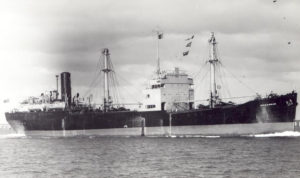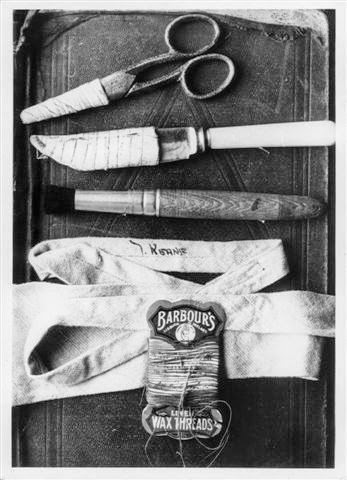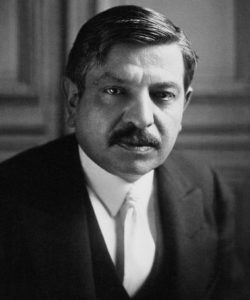Byron Deveson and I have independently been reading up on the Electrolytic Zinc Company: newspaper summaries of its annual accounts for 1947-1948 (here also) show that it employed 1709 staff at Risdon plus a further 432 at its Rosebery mining operation. It was in the process of expanding its wharf at Risdon, but was generally hampered by staff shortages.
Here’s an Electrolytic Zinc job advert from 06 November 1948:
AN OPPORTUNITY FOR STEADY EMPLOYMENT IS OFFERED BY ELECTROLYTIC ZINC COMPANY OF AUSTRALASIA LIMITED, RISDON.
LEADBURNERS: Present rate of pay, £10/13/ per week.
FITTERS AND TURNERS. Present rate of pay, £9/5/ per week.
GENERAL LABOURERS: Present rate of pay, £6/16/ per week. Day work.
PLANT OPERATIVES-SHIFT WORKERS: Present average weekly earnings of shift workers working 40 hours per week on 7-day rotation range from £8/10/6 per week to £9/7/6 per week, according to class of work.
TRAIN SERVICE TO WORKS FOR ALL SHIFTS. Fare, 6d. per week.
40 HOURS PER WEEK: Day Work, 7.45 a.m. to 4.20 p.m., Mondays to Fridays. Shift Work: Day Shift, 7.45 a.m. to 3.45 p.m. Afternoon Shift, 3.45 p.m. to 11.45 p.m. Night Shift, 11.45 p.m. to 7.45 a.m.
PAID ANNUAL HOLIDAYS: 10 days, plus 10 statutory holidays per annum.
AMENITIES: Insurance Scheme, covering sickness and death. Health, medical and dental services. Cribtime store sells tobacco, confectionery, clothing, footwear, etc. Apply to Registrar personally, or by telephone W1111, or by letter to the Company, Box 634B, G.P.O., Hobart.
As Byron Deveson noted in a comment a few days ago, the Incharran and Era steamships traversed well-worn grooves, keeping the Electrolytic Zinc Company’s Risdon works supplied with zinc concentrates (both from Broken Hill via Newcastle in NSW, and from the company’s Rosebery mines on the other side of Tasmania), and then passing the lead-rich residues of its zinc extraction process onward to the huge lead smelting works in Port Pirie. At Port Pirie, the ships would then get loaded with calcines and drums of acid before returning to Tasmania. (Note that Risdon is treated as an output of Hobart.) And so it went on.
?? Oct 1948 – Newcastle (NSW)
— load roasted zinc ore concentrates (mined in Broken Hill?)
?? Oct 1948 – arrived Hobart
01 Nov 1948 – departed Hobart
02 Nov 1948 – arrived Burnie
— load zinc concentrates (mined in Rosebery?)
04 Nov 1948 – departed Burnie
05 Nov 1948 – arrived Hobart / Risdon
— unload zinc concentrates
— load zinc residues
10 Nov 1948 – departed Hobart / Risdon
14 Nov 1948 – arrived Port Pirie
— unload 1000 tons of zinc residues and 58 empty drums
— load 4100 tons of calcines and 58 drums of acid, plus five tons of general cargo
?? Nov 1948 – departed Port Pirie
?? Nov 1948 – arrived Hobart / Risdon
— unload calcines etc
— load 1,000 tons of zinc residues
24 Nov 1948 – departed Hobart / Risdon
29 Nov 1948 – arrived Port Pirie
02 Dec 1948 – departed Port Pirie (for Port Adelaide) “in ballast”
03 Dec 1948 – arrived Port Adelaide
09 Dec 1948 – departed Port Adelaide (for Risdon)
Note that on 17 Nov 1948, the Incharran, Moonta and Cheltenham vessels were (along with various buildings in Port Pirie) bedecked with flags to register people’s delight at the birth of a son to Princess Elizabeth and her husband the Duke of Edinburgh.
And finally: I’ve just started putting together a list of Somerton Man “known unknowns”. Which is just a clunky way of saying ‘a page full of things I know (pretty much) exist, which I haven’t yet seen, but which I’d like to’. Please feel free to suggest other things that should be on there, or ways to see any of those things (and so remove them from the list)!




